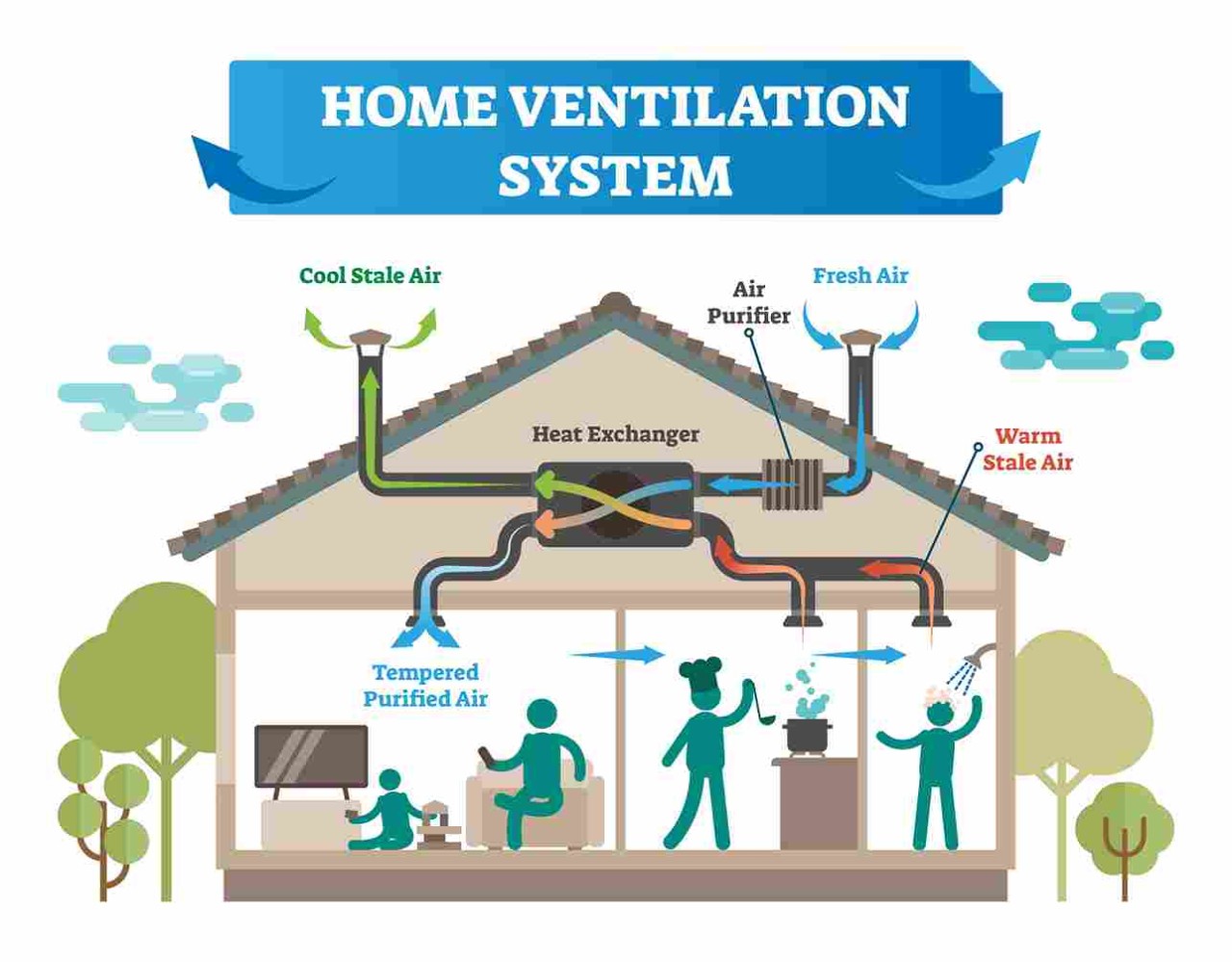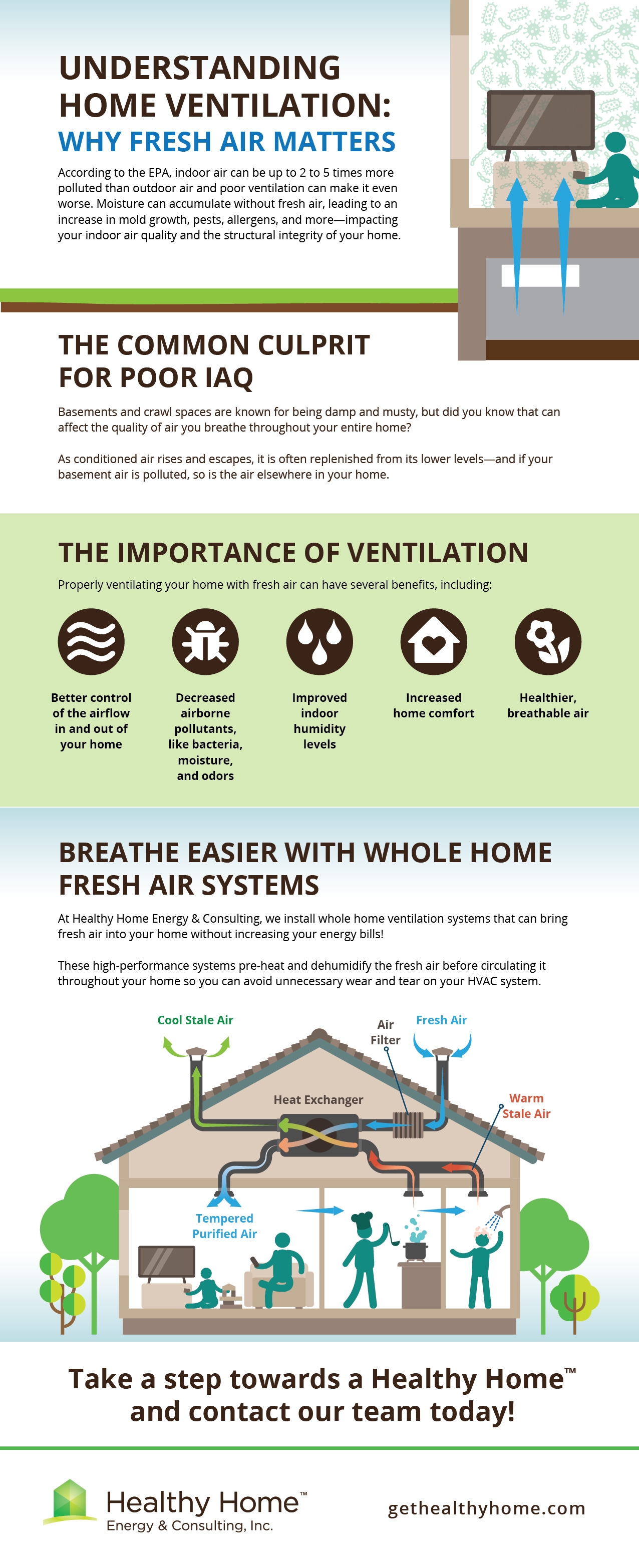The Duty of Home Ventilation in Protecting Against Mold and Indoor Allergens
Home air flow is a vital part in maintaining a healthy and balanced interior environment. It manages humidity levels, which can protect against the growth of mold and the build-up of allergens. Several property owners ignore the value of proper ventilation, usually leading to unseen concerns. Recognizing exactly how air flow systems function and their impact on air quality can be the key to a healthier home. What steps can be taken to boost these systems efficiently?
Understanding Home Air Flow Equipments
While lots of home owners might overlook the value of air flow, recognizing home ventilation systems is essential for keeping indoor air quality and preventing mold and mildew growth - Home Ventilation Melbourne. These systems help with the exchange of stagnant indoor air with fresh outside air, effectively minimizing pollutants and dampness levels. Usual kinds consist of all-natural ventilation, which counts on wind and temperature distinctions, and mechanical air flow, which makes use of ducts and followers to control airflow. In addition, well balanced air flow systems incorporate both methods to maximize air top quality. Properly created and kept ventilation systems can help control temperature and moisture, ensuring a comfortable living setting. Property owners must think about variables like home environment, occupancy, and format when selecting a ventilation system to ideal suit their requirements and boost total air top quality
The Impact of Moisture on Mold Development
Moisture plays a vital function in mold and mildew development, making it a critical factor for homeowners to check. Mold and mildew grows in environments where humidity degrees go beyond 60%, as these conditions offer the dampness needed for spores to proliferate and germinate. High humidity can arise from different resources, consisting of inadequate ventilation, water leakages, and cooking or showering tasks. When moisture levels continue to be raised, mold can establish rapidly on organic materials such as drywall, timber, and textile. Homeowners ought to utilize dehumidifiers and ensure correct air flow in locations prone to moisture, such as basements and shower rooms. Preserving indoor humidity between 30% and 50% can substantially minimize the threat of mold growth, adding to a much healthier living atmosphere.
Identifying Usual Indoor Allergens
Interior atmospheres can nurture a selection of allergens that influence wellness and comfort. Usual interior irritants include dust mites, pet dander, mold and mildew spores, and pollen. Allergen thrive in bed linens, carpetings, and furniture, feeding on organic material and adding to respiratory system issues. Pet dog dander, made up of small flakes from skin and hair, can set off allergies in delicate individuals. Mold spores, typically existing in wet areas, can influence and multiply air quality. Furthermore, pollen can infiltrate homes via open home windows or on apparel. Determining these irritants is crucial for keeping a healthy indoor environment. Understanding of their presence enables home owners to take aggressive procedures to decrease direct exposure and boost overall interior air quality.
Benefits of Proper Air Flow
Appropriate air flow is important for maintaining a healthy interior atmosphere, as it assists to regulate air quality and look at this now minimize the accumulation of pollutants. Sufficient airflow facilitates the exchange of outdoor and indoor air, consequently thinning down dangerous substances such as unpredictable organic compounds, allergens, and dust. This process not only improves convenience yet likewise contributes to the overall health important source of residents by lessening respiratory system concerns (Home Ventilation Melbourne). Appropriate ventilation successfully controls moisture degrees, lowering the probability of mold and mildew growth and promoting a drier setting favorable to health and wellness. Additionally, it can boost energy effectiveness by making sure that heating & cooling systems run more efficiently, resulting in lower power costs. In general, appropriate air flow is a critical component in promoting a secure and healthy and balanced living space

Tips for Improving Home Air Flow
Although lots of home owners might overlook it, improving home air flow is crucial for boosting air high quality and protecting against mold and mildew development. One efficient strategy is to consistently open windows to advertise cross-ventilation, enabling fresh air to circulate. Installing exhaust followers in cooking areas and restrooms can effectively get rid of moisture-laden air, reducing moisture levels. Home owners should also consider utilizing air purifiers with HEPA filters to record contaminants and irritants. On a regular basis maintaining a/c systems, including transforming filters, assurances come to a head air flow and performance. Securing leaks around windows and doors can stop outdoors air from getting in, which aids preserve a consistent interior atmosphere. Finally, integrating houseplants can normally enhance air quality while including aesthetic worth to the home.
Often Asked Inquiries
Just how Typically Should I Clean My Home Air Flow System?
Figuring out just how frequently to cleanse a home ventilation system depends on numerous factors, consisting of usage and ecological problems. Home Ventilation Melbourne. Generally, specialists advise a complete cleaning every three to 5 years to maintain optimal air movement and effectiveness
Can Plants Assist Reduce Indoor Allergens?
Research suggests that specific indoor plants may help in reducing irritants by improving air high quality and raising humidity. However, their efficiency varies, and preserving a clean atmosphere stays crucial Full Report for managing indoor irritants properly.
What Sorts Of Air Filters Are Best for Mold Prevention?

Exist Details Ventilation Demands for Cellars?

Exactly how Do I Know if My Air Flow Is Functioning Effectively?
To figure out reliable air flow, one need to monitor humidity levels, inspect air flow with vents, and observe indications of condensation or stationary air. Normal analyses can show whether the system sufficiently distributes and exchanges interior air.
Recognizing just how air flow systems feature and their influence on air top quality could be the secret to a much healthier living room. While several home owners might forget the relevance of air flow, recognizing home air flow systems is crucial for keeping interior air high quality and protecting against mold development. Usual kinds consist of all-natural air flow, which counts on wind and temperature level distinctions, and mechanical air flow, which uses fans and ducts to control air flow. Correct ventilation is necessary for preserving a healthy indoor setting, as it aids to manage air high quality and decrease the buildup of toxins. Lots of property owners may overlook it, boosting home ventilation is important for enhancing air top quality and stopping mold development.